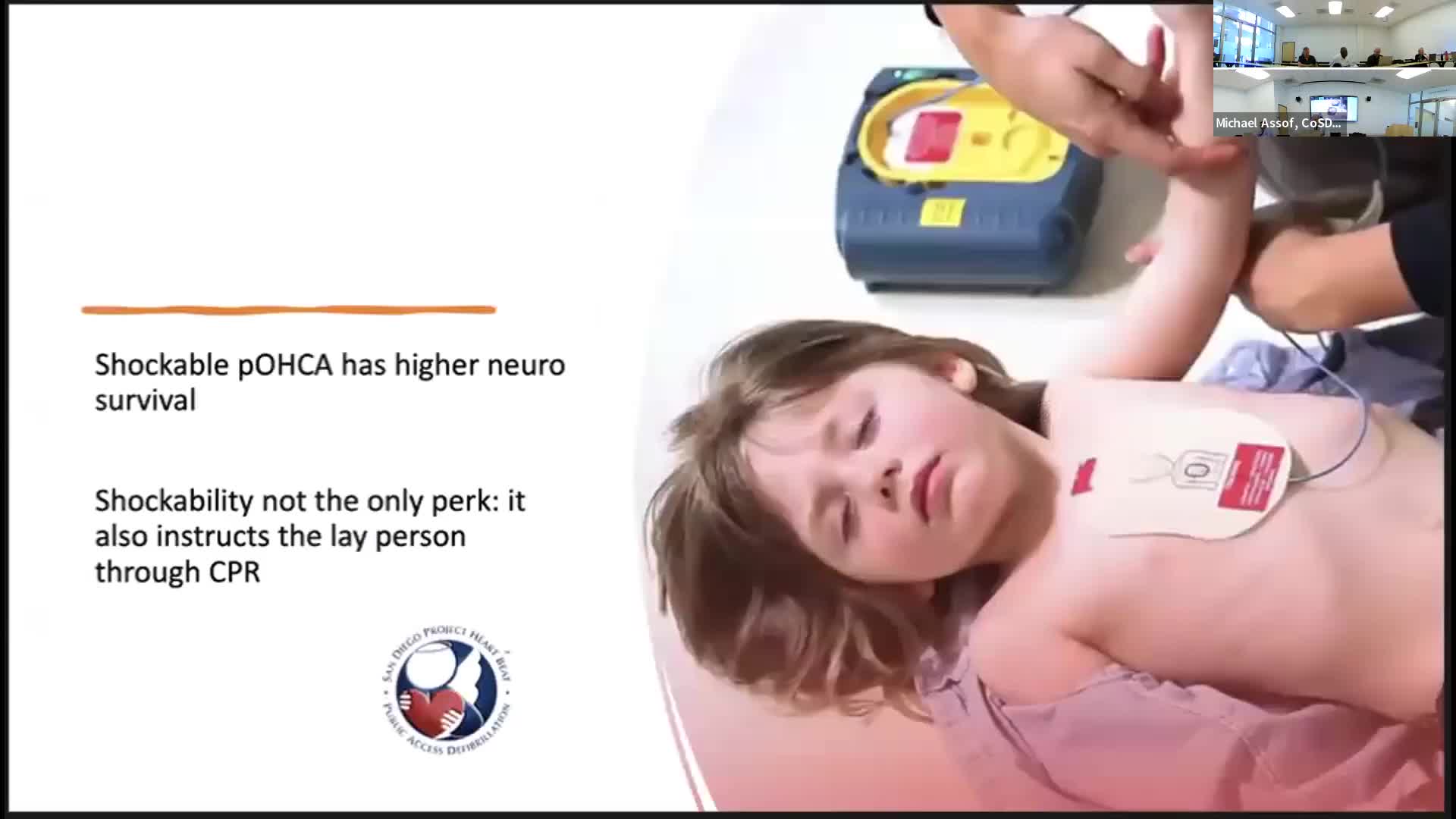San Diego's Project Heartbeat emphasizes AED use and CPR training for pediatric emergencies
July 11, 2025 | San Diego City, San Diego County, California
Thanks to Scribe from Workplace AI and Family Portal , all articles about California are free for you to enjoy throughout 2025!

This article was created by AI using a video recording of the meeting. It summarizes the key points discussed, but for full details and context, please refer to the video of the full meeting. Link to Full Meeting
The session began with a presentation on the limited data available regarding AEDs specifically designed for children. It was noted that even in pediatric cases, the use of AEDs can significantly increase the chances of return of spontaneous circulation (ROSC). The medical directors of Project Heartbeat shared three recent cases where AED rhythm strips provided crucial information that altered patient diagnoses and treatment plans. They advocated for enhanced public access to AEDs for children and suggested that rhythm strips should be transmitted to emergency departments to aid in patient care.
Discussions then shifted to the emergency medical services (EMS) response to pediatric cardiac arrest. The importance of a coordinated team approach was emphasized, with clear roles for compressions, ventilation, and access to intravenous lines. Participants were encouraged to prepare in advance for potential cardiac arrest scenarios, ensuring that all team members are mentally ready to act swiftly.
The meeting also addressed the significance of high-quality chest compressions, with a target compression rate of 100 to 120 per minute. The need for minimal interruptions during CPR was stressed, as well as the importance of allowing full chest recoil. The use of mechanical CPR devices was discussed, noting their effectiveness in certain pediatric cases.
Ventilation techniques were another focal point, with a consensus that bag-mask ventilation (BMV) remains a critical skill. The group acknowledged the ongoing debate regarding the best ventilation rates and the necessity for continuous monitoring of ventilation quality. Advanced airway management strategies were also reviewed, with a recommendation to prioritize BMV over endotracheal intubation due to the latter's higher complication rates in pediatric patients.
Finally, the meeting concluded with an update on a forthcoming randomized controlled trial comparing BMV and supraglottic airways, which is expected to provide valuable insights into pediatric airway management by 2030.
Overall, the meeting underscored the urgent need for improved training, resources, and protocols in the management of pediatric cardiac arrest, aiming to enhance outcomes for young patients in critical situations.
Converted from Pediatric OHCA – Let’s Talk about the Littles meeting on July 11, 2025
Link to Full Meeting
Comments
View full meeting
This article is based on a recent meeting—watch the full video and explore the complete transcript for deeper insights into the discussion.
View full meeting